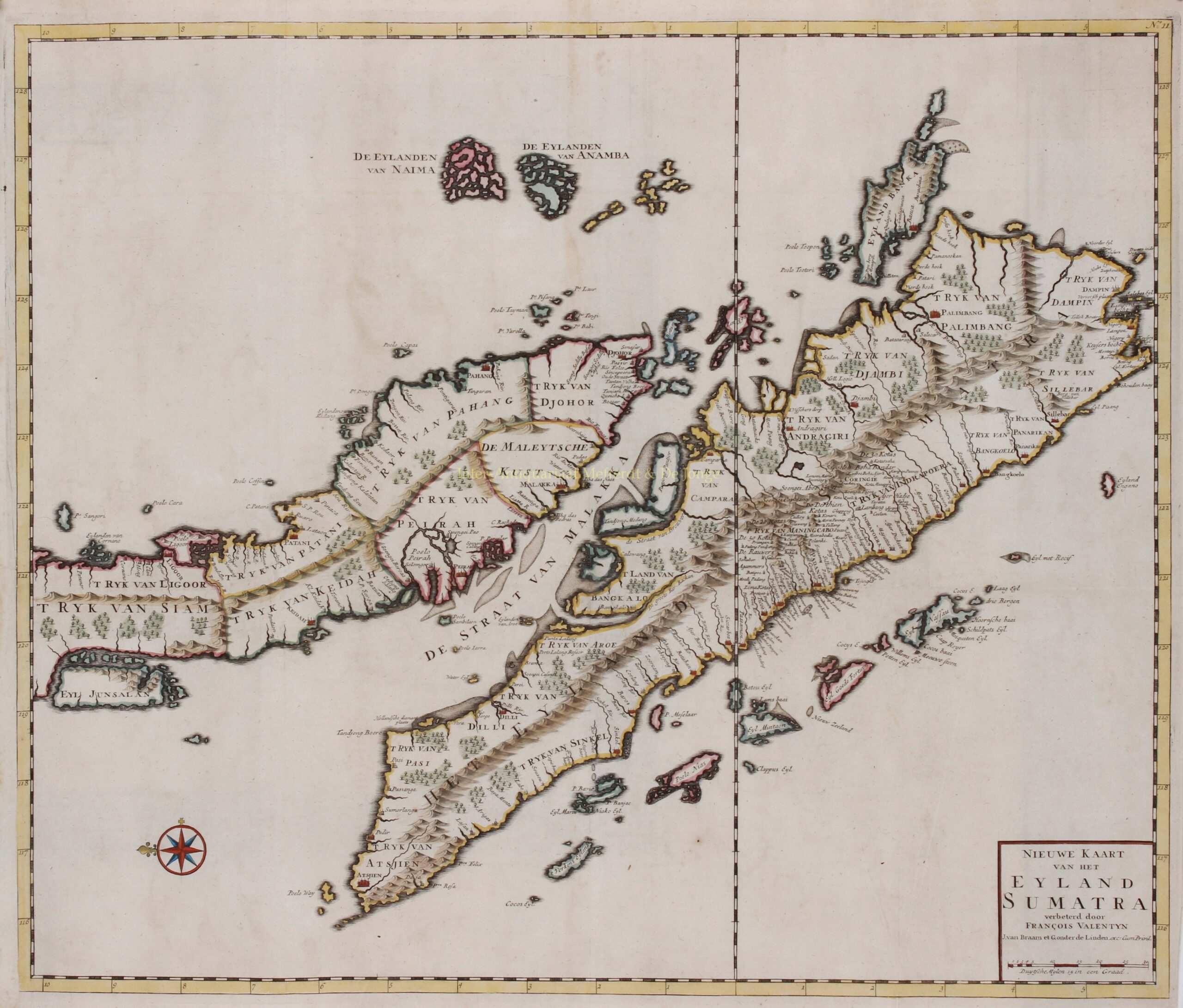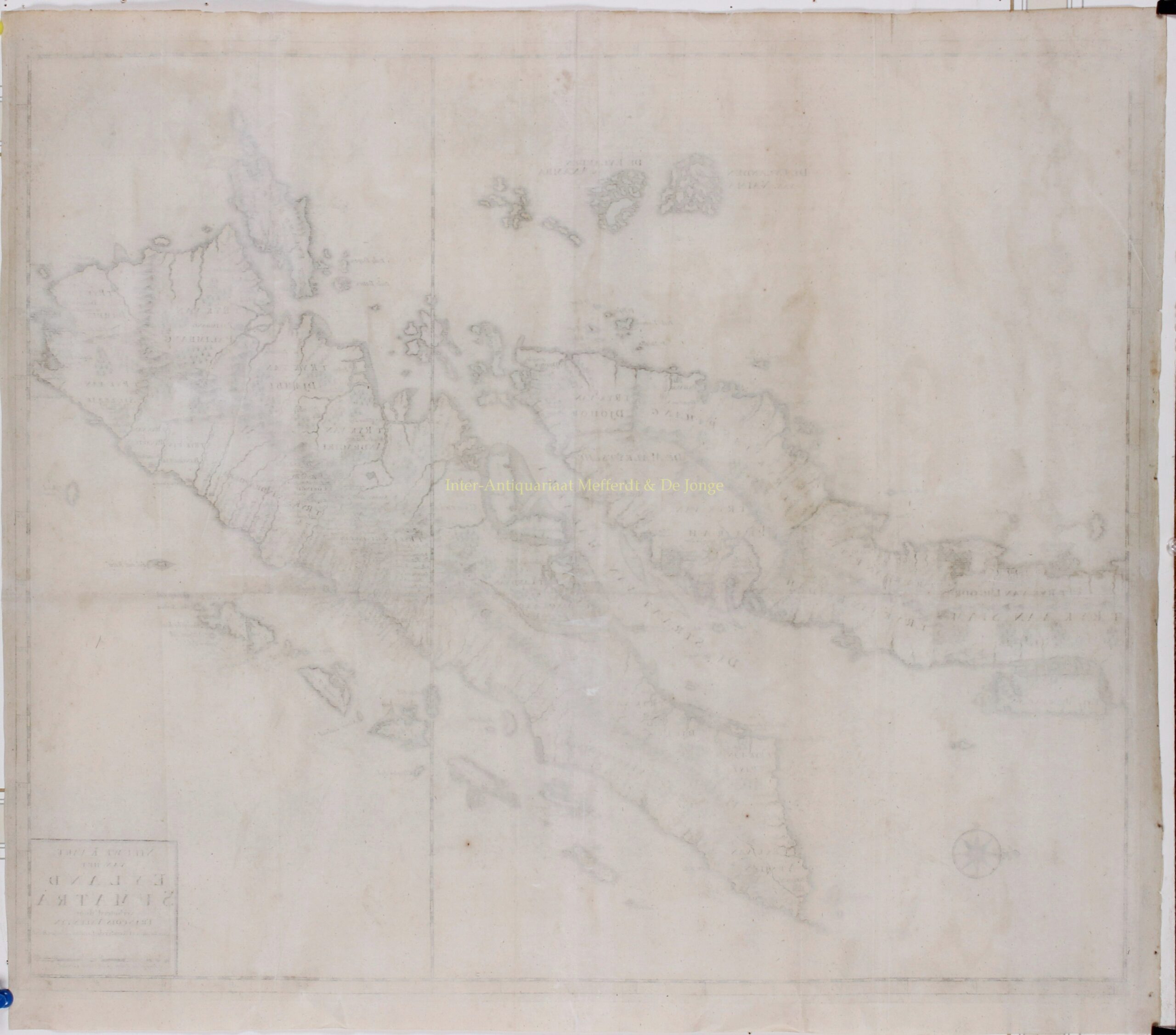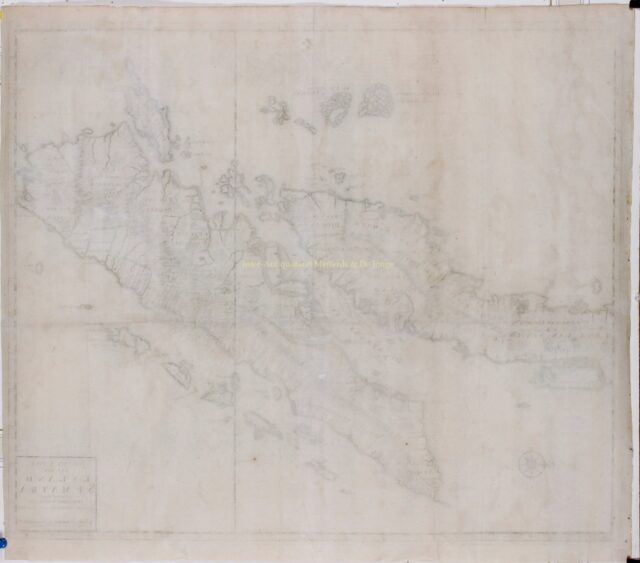Malaysia, Malacca Strait, Singapore and Sumatra – François Valentyn, 1724-1726
THE DUTCH IN MALAYSIA AND SUMATRA “Nieuwe Kaart Van het Eyland Sumatra verbeterd door Francois Valentyn”, one of the earliest…
Read more
THE DUTCH IN MALAYSIA AND SUMATRA
“Nieuwe Kaart Van het Eyland Sumatra verbeterd door Francois Valentyn”, one of the earliest maps to report information drawn from the Dutch VOC period.
Copper engraving of the Malay Peninsula, Singapore, the Straits of Malacca, and Sumatra by François Valentyn. Coloured by a later hand. Size: 50,5 x 59,8 cm. Verso: blank.
Published in Dordrecht 1724-1726 by Joannes van Braam and Gerard onder de Linden as part of Valentyn’s Oud en nieuw Oost-Indiën, vervattende een naaukeurige en uitvoerige verhandelinge van Nederlands mogentheyd in die gewesten, benevens eene wydluftige beschryvige der Moluccos … en alle de eylanden onder dezelve landbestieringen behoorende; het Nederlands comptoir op Suratte, en de levens der Groote Mogols…
Valentyn’s map is one of the first published to present a sophisticated treatment of Malaya and Sumatra, and the model upon which most subsequent maps through the late 18th century were based. This is one of the earliest maps to expound upon the indigenous polities of Malaya. Valentyn identifies seven separate kingdoms within the peninsula. The presentation thus represents a major change in Malayan politics following the Dutch capture of Portuguese Malacca in 1606. The Dutch forged a peaceful arrangement with the Sultan of Johor, leading to a time of general peace and prosperity in the region. This prosperity, combined with the decline of the Sunnite of Aceh in northern Sumatra, allowed for the rapid development and expansion of smaller polities throughout the peninsula, These include Johor, Perak, Pahang, Patani, Kedah, and Ligor – the latter two of which, as noted here, fell under the sway of Siam. Valentyn moreover, has recorded some 80 place names in Malaya alone, and far more in Sumatra, far more than any predecessor had attempted.
Oriented to the east, the map covers the area from the Island of Junsalan (Penang / Prince of Wales Island / Pulu Pinang) south as far as the Straits of Sunda and west to Atsjien (Banda Aceh) at the western tip of Sumatra. It extends eastwards to the Anambas Islands and the Bangka-Belitung Islands. Topography is rendered in profile. The map also offers limited submarine detail through the Strait of Malacca. Several small towns, most notably Soengei Pao, appear in the vicinity of modern day Kuala Lumpur. Johor is identified as Djohor, just to the south of which Singapore is probably identified as Senasur.
François Valentyn (1666 Dordrecht – 1727 The Hague) was a minister, naturalist and writer who is best known for his Oud en Nieuw Oost-Indien [Old and New East-India], a history of the Dutch East India Company (VOC) and their activities in the East Indies. Valentyn’s maps were among the most accurate and large scale productions detailing the East Indies thus far published. As VOC officer, Valentyn doubtless had access to VOC manuscript records which he complied into his remarkable collection of maps. In fact, Valentyn’s maps are so superior to previous maps that their publication itself is rather surprising. The VOC’s policy of extreme secrecy, especially regarding cartographic matters, historically limited publication of their charts.
Valentyn spent significant time in the tropics, notably in Ambon, in the Maluku Archipelago. In total, Valentyn lived in the East Indies 16 years. Valentijn was first employed by the VOC at the age of 19, where he served as Minister to the East Indies. He returned to Holland for about ten years, before returning to the Indies in 1705 where he was to serve as Army Chaplain on an expedition in eastern Java. He again returned to Dordrecht where wrote his Oud en Nieuw Oost-Indien (1724-26) a massive work of five parts published in eight volumes and containing over one thousand illustrations and including some of the most accurate maps of the Indies of the time.
While Valentyn’s maps and diagrams were prized possessions, his scholarship, judging by contemporary standards was not of the highest integrity. Valentyn borrowed liberally from other scientists and writers. Nevertheless, Valentyn is considered as an important figure and, given his writing style, diction and penchant for story, one of the greatest Dutch prose writers of the time.
Price: SOLD




